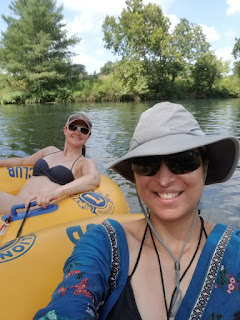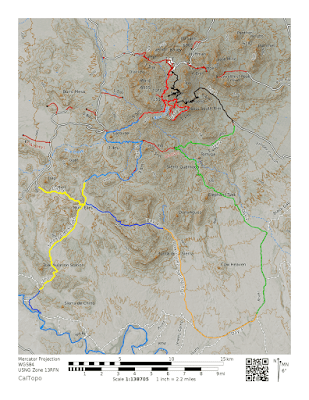Adventures With BeeGee Hot Sauce
My First Attempt to Make Hot Sauce
Not too long ago, I decided to try my hand at making my own
hot sauce. I was partially inspired by
two sources to finally diving into making my own food. The first, most of the best hikers and
backpackers dehydrate their own food, which gives a lot more options for eating
on the trail. The second source was a
podcast on Science Friday where culinary scientist Dr. Ali Bouzari discusses
how to make hot sauce. My plan is to
eventually develop a tasty vinegar based hot sauce that I can take out on the
trails to improve my eats just a little.
The “Hot” Sauce
The first sauce I attempted to make was of the hot variety
and I started the process on October 15.
For this sauce, I bought serrano peppers, habanero peppers, and Chile de
arbol peppers. Next, I roasted the peppers
using the broil (500 F) setting for 15 minutes and then flipped the peppers and
roasted for 10 more minutes. Roasting
peppers is supposed to create a rich, smoky flavor. After the roasting was complete, I pulled all
the stems off the peppers and tossed everything in the blender. I had 5.6 oz of serrano peppers, 1 oz of Chile
de arbol, and 2 oz of habanero peppers (all peppers were weighed after roasting).
With all the peppers in the blender, I attempted to make a purée. This mostly failed and I ruined a large
plastic spoon trying to mash the peppers down into the blender. After, the peppers were blended as fine as possible
(this took about 15 minutes of mashing with a spoon and stirring); I added 2
tablespoons of salt. Once it was all blended,
the “purée” was transferred to a glass mason jar. Finally, the hot sauce was left on my kitchen
counter to ferment for a little over 24 hours with the lid placed on loosely. I let BeeGee sniff the purée, she actually
likes a little bit of spice, and she decided she was brave enough to taste a
little. Her thoughts on the sauce seemed
mixed.
After fermenting for around 27 hrs, 12 oz of white wine
cooking vinegar was stirred into the glass jar.
The mix was then aged until October 25th, which was over a
week (other hot sauces are aged up to 3 years).
On the 25th, the hot sauce was bottled. First, the mixture was puréed once more for 1
min. Then the mix was slowly filtered
through fine mesh strainer, which took around 3 hrs. The filtered liquid was then poured into a 5
oz Woozy bottle with a dasher top.
The Review
I tasted the vinegar mix every day to try to get a sense of
the aging process. The sauce was pretty
spicy as it aged, but after it was bottled, it was only mild. In addition, I feel the flavor is a little too
vinegary, and lacks a complex flavor. My
first batch of hot sauce turned out to be mediocre.
 |
| The final product: my ok-ish first batch of hot sauce |
What I learned
The good news is Linda came home and pointed out the obvious
food processor sitting on the counter.
Making sure the peppers are puréed initially is key to making sure the
complex flavor of roasted peppers is transferred to the final product. In addition, I plan to add garlic to increase
the flavor on my next batch.
If you have any ideas on what I can
add or do to improve my hot sauce, I would love the feedback. Also, if you enjoy the blog, please follow us on Facebook.





Comments
Post a Comment